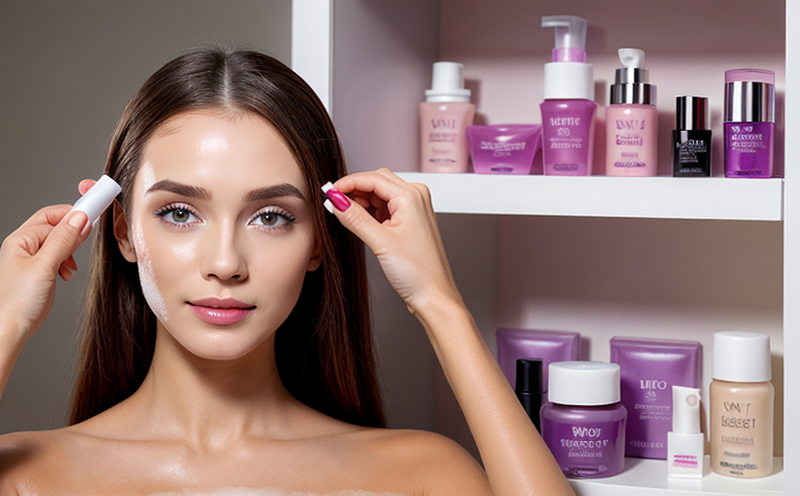Reproductive Toxicity Testing in Cosmetics
Reproductive toxicity testing is an essential component of cosmetic product development and safety evaluation. This type of testing ensures that products do not contain substances known to harm the reproductive system, thereby protecting consumers' health and well-being.
The European Union's REACH regulation has made it mandatory for manufacturers to conduct such tests on certain ingredients used in cosmetics. The testing is typically performed using animal models like rabbits or rats, though alternatives are increasingly being explored with the aim of reducing reliance on animals. These tests assess various endpoints including fertility, teratogenicity (ability to cause birth defects), and developmental toxicity.
The process involves several stages where different aspects of reproductive health are evaluated under controlled laboratory conditions. Specimens used in these tests include male and female reproductive tissues or even whole organisms depending on the specific regulatory requirements and testing protocols. The specimens undergo various treatments with potential cosmetic ingredients to determine if any adverse effects can be observed.
For instance, one common endpoint is fertility studies where males are exposed to a substance for 14 days before mating with untreated females; their ability to sire viable offspring is then assessed post-exposure. Another critical aspect is assessing developmental toxicity by exposing pregnant animals during specific gestation periods and observing the health of both mother and fetus.
Accurate data collection and interpretation are crucial in ensuring reliable results from reproductive toxicity tests. Compliance with international standards such as OECD guidelines or EU regulations ensures that findings are accepted globally. Proper documentation and reporting also play vital roles in meeting regulatory requirements and supporting product safety claims.
In summary, reproductive toxicity testing serves to safeguard human health by identifying potential hazards associated with cosmetic ingredients before they reach consumers' hands. It is a fundamental step towards responsible innovation within the beauty industry and aligns with broader trends toward more humane approaches to scientific research.
Benefits
- Promotes safer consumer products by identifying harmful substances early in the production process.
- Aids manufacturers in meeting stringent regulatory standards, enhancing market access.
- Supports ethical practices within the beauty industry through responsible use of animal models or alternative methods.
- Facilitates informed decision-making during product development and formulation adjustments.
Eurolab Advantages
Our expertise in reproductive toxicity testing sets us apart as a leading partner for your safety evaluation needs. With state-of-the-art facilities and experienced scientists, Eurolab ensures accurate and reliable results that meet the highest standards.
We offer comprehensive services tailored to individual client requirements, whether you need assistance with study design, sample preparation, or final report generation. Our commitment to innovation allows us to stay ahead of changing regulatory landscapes, ensuring your products remain compliant worldwide.
Moreover, our dedicated team provides personalized support throughout the entire testing process, from consultation to delivery of results. By choosing Eurolab, you can trust that every aspect of your reproductive toxicity tests will be handled with precision and integrity.
Use Cases and Application Examples
In practice, reproductive toxicity testing is applied in various scenarios throughout the cosmetic industry:
- New Product Launches: Companies often perform these tests before introducing new ingredients or formulations to ensure they meet stringent safety criteria.
- Risk Assessment: When evaluating existing products for potential risks, companies may conduct reproductive toxicity testing as part of ongoing quality assurance programs.
- Ingredient Screening: During the early stages of product development, manufacturers screen individual ingredients for their reproductive effects before incorporating them into final formulas.
These tests play a crucial role in protecting public health while fostering trust among consumers who value safety above all else. By integrating reproductive toxicity testing into their workflows, companies demonstrate their commitment to responsible and ethical practices.





